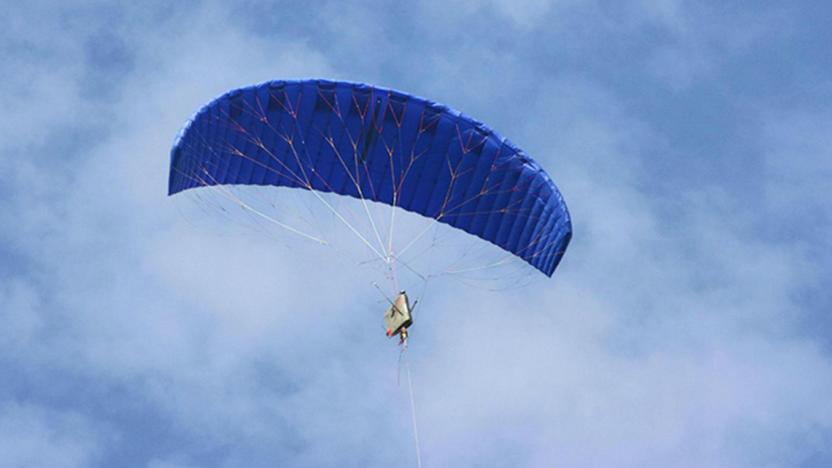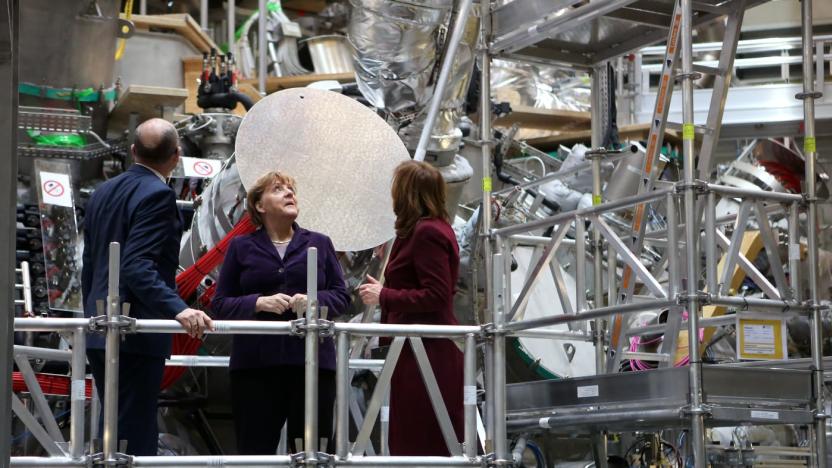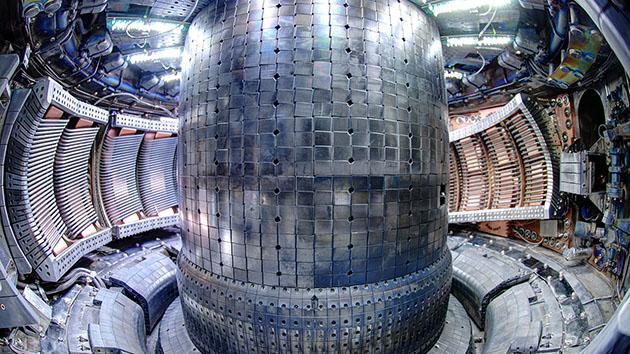TL16NuPwr
Latest

Diamonds convert nuclear waste into clean batteries
Nuclear waste is normally a major environmental headache, but it could soon be a source of clean energy. Scientists have developed a method of turning that waste into batteries using diamond. If you encapsulate short-range radioactive material in a human-made diamond, you can generate a small electrical charge even as you completely block harmful radiation. While the team used a nickel isotope for its tests, it ultimately expects to do this using the carbon isotope you find in graphite blocks from nuclear power plants.

New magnetic field theory gets us closer to nuclear fusion
Researchers from the US Department of Energy (DoE) and Princeton University have developed a new theory on plasma that could help scientists figure out solar flares and fusion power. Most fusion research is focused on "magnetic confinement" reactors that use powerful magnets to fuse hydrogen plasma into helium. One of the biggest problems with that technique is that the plasma itself spawns new magnetic fields, which play havoc with the reactions.

Tesla runs an entire island on solar power
Now that Tesla has officially acquired SolarCity, it's not wasting any time showing what the combined entity can do. Tesla has revealed that it's running the island of Ta'u (in American Samoa) on a solar energy microgrid that, at 1.4 megawatts, can cover "nearly 100 percent" of electrical needs. It's not just the 5,328 solar panels that are key -- it's the 60 Tesla Powerpacks that offer 6 megawatt-hours of energy storage. While Ta'u is normally very sunny, the packs can keep it running for three days without sunlight. They don't have to worry about a cloudy day leading to blackouts.

Part of Scotland will soon be powered by kites
Name a method of generating power that's cheap, efficient, sustainable and sounds like something Mary Poppins dreamed up after downing 20 teaspoons of sugar. That's right -- kite power. One of the world's first non-experimental, kite-driven power stations will be established offshore in Southern Scotland, at the Ministry of Defence's West Freugh Range near Stranraer. UK company Kite Power Solutions plans to install a 500 kilowatt system that it expects will generate 'several hundred megawatts' of energy by 2025, Independent reports.

Twisty fusion reactor goes online after 19 years of work
Germany just took fusion power one big, important step forward. The country's Max Planck Institute for Plasma Physics has just switched on Wendelstein 7-X, the first large fusion reactor based on a twisty stellarator design. It's only producing hydrogen plasma at the moment and won't actually generate energy, but power isn't really the point. Instead, it'll serve as proof that stellarators could provide energy while operating continuously, unlike current (tokamak-based) fusion reactors that operate in short pulses. They should be safer, too.

Lockheed Martin thinks it can give the world unlimited clean energy in 20 years
Remember back in the '50s, when official-sounding newsreels promised that we'd have new-kew-lur-powered cars by the '70s and no one would ever be unhappy? Probably not, since we've gotten a skewed sense of history from watching too many episodes of Futurama. Still, several decades behind schedule, the promise of clean and unlimited energy might finally be looming upon the horizon, thanks to Lockheed Martin. The defense behemoth believes that it might have a working prototype of its Compact Fusion Reactor in a decade, which might just save the world as we know it.

MIT reactor gets a second shot at producing unlimited clean energy
Nuclear fusion is the holy grail of scientists (and politicians) as it could produce limitless free energy without nasty consequences like meltdowns and radioactive waste. Though nobody's been able to build a reactor that produces more energy than it consumes (except arguably one time), scientists are still trying, with three experimental reactors currently in operation in the US. One of those, however, has been in the Obama administration's cross-hairs: MIT's Alcator C-Mod reactor. The White House decided to chop that program back in 2012, calling it too small, outdated and a vanity program for MIT, according to the Boston Globe.

Urine-powered generator produces six hours of electricity per bathroom break
We've all heard the expression "haste makes waste," but how about waste making energy? At the fourth annual Maker Faire Africa in Lagos, Nigeria, a quartet of teenage girls ages 14 through 15 have created a urine-powered generator. This eco-friendly energy source cranks out six hours of electricity for every liter of human bodily fluid by separating the excretion's hydrogen with an electrolytic cell. While this method of human waste disposal seems promising, the device has the potential to be a pee-powered biobomb and will need more than its limited safety measures before you're able to pick one up at your local hardware store. However, if this can help us save a few bucks on our energy bill, then we need to introduce these girls to these guys posthaste.




